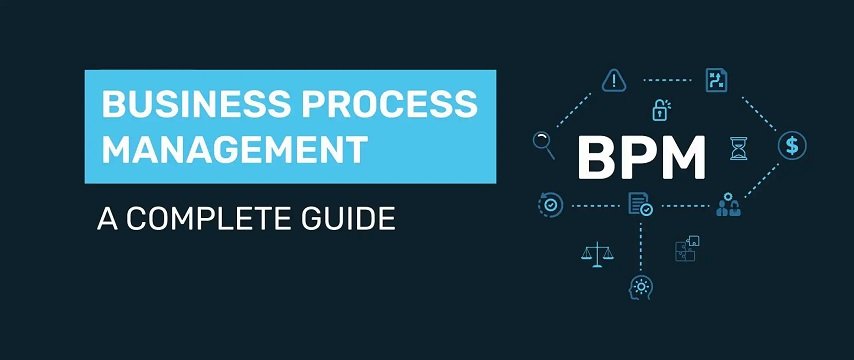Companies are constantly seeking ways to reduce costs while improving efficiency. One of the most effective solutions is Business Process Management (BPM) software, which streamlines workflows, eliminates redundancies and enhances collaboration. Many business process management companies offer solutions that can help organizations cut costs significantly by automating tasks and optimizing operations.
One mid-sized manufacturing company struggling with operational inefficiencies turned to a BPM solution to address their challenges. Within a year, they successfully reduced costs by 30%, improved productivity, and enhanced internal collaboration. By leveraging top collaboration platforms, they also ensured seamless communication across teams, eliminating delays in decision-making.
This case study explores how the company achieved such remarkable savings, the strategies they implemented, and how businesses can replicate this success. Whether you’re looking for ways to streamline your processes or maximize efficiency, this story highlights the power of BPM solutions in transforming business operations.
The Challenges: Inefficiencies and Rising Costs
Before implementing a BPM solution, the company faced multiple operational roadblocks:
- Manual and Redundant Processes: Most workflows were paper-based or managed via email, causing delays and frequent miscommunication.
- High Labor Costs: Employees spent hours on repetitive administrative tasks, reducing productivity.
- Lack of Visibility: Without a centralized system, managers had no real-time insights into process bottlenecks.
- Ineffective Collaboration: Different departments worked in silos, leading to duplicated efforts and wasted resources.
These inefficiencies significantly impacted profitability. The management team realized that without a structured approach to process optimization, they would continue to lose revenue.
The BPM Solution: A Game-Changer for Cost Savings
The company decided to adopt a BPM solution from one of the leading business process management companies. The software offered automation, process standardization, and analytics-driven insights to enhance efficiency. Here’s how they implemented it:
1. Process Automation to Reduce Manual Efforts
The BPM software automated key workflows, such as invoice approvals, procurement, and compliance reporting. Employees no longer needed to manually route documents for approvals, significantly cutting down administrative time and labor costs.
2. Integration with Top Collaboration Platforms
To improve teamwork, the BPM system was integrated with top collaboration platforms like Slack and Microsoft Teams. This ensured real-time communication, reduced back-and-forth emails, and allowed teams to track workflow progress seamlessly.
3. Data-Driven Decision Making
With built-in analytics and dashboards, managers gained real-time visibility into workflows. They could identify process bottlenecks, measure performance, and make informed decisions based on data rather than guesswork.
4. Standardized Workflows for Consistency
Instead of relying on inconsistent manual processes, the company implemented standardized workflows, ensuring that each department followed best practices. This improved compliance and reduced errors that previously led to financial losses.
The Results: 30% Cost Reduction and Increased Productivity
Within a year, the company saw a 30% reduction in operational costs. Here’s how:
- Lower Labor Costs: Automation reduced the need for repetitive manual work, freeing employees to focus on higher-value tasks.
- Faster Approvals and Processing Times: By integrating with top collaboration platforms, teams communicated better, reducing delays in approvals and project completion.
- Error Reduction: Automated workflows eliminated human errors in critical tasks such as invoicing and compliance.
- Optimized Resource Allocation: Managers used data insights to allocate resources efficiently, reducing unnecessary expenditures.
How Other Businesses Can Achieve Similar Cost Savings
If your business is facing similar challenges, here’s how you can replicate this company’s success with a BPM solution:
1. Identify Inefficiencies
Audit your current processes to pinpoint bottlenecks, redundancies, and tasks that can be automated.
2. Choose the Right BPM Solution
Partner with business process management companies that offer customizable solutions tailored to your industry and needs.
3. Integrate with Collaboration Tools
Ensure that your BPM solution works seamlessly with top collaboration platforms to streamline communication and workflow tracking.
4. Leverage Data for Continuous Improvement
Use built-in analytics to monitor process performance and continuously optimize workflows for maximum efficiency.
Conclusion
This case study demonstrates how a well-implemented BPM solution can cut costs, improve productivity, and enhance collaboration within an organization. By automating workflows, integrating with top collaboration platforms, and leveraging data-driven insights, businesses can eliminate inefficiencies and achieve substantial savings.
If your company is looking to reduce costs and improve operational efficiency, now is the time to explore business process management companies that can help you achieve similar results. A BPM solution could be the key to unlocking long-term growth and profitability.

